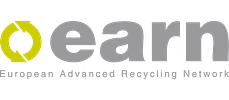WEEE recycling and disposal
WEEE recycling
Waste electrical and electronic equipment (WEEE) from collections of private households or commercial and industrial companies are recycled at the recycling partners of EARN Elektroaltgeräte Service GmbH in the particular countries.
The basis for treatment of old appliances is the DIRECTIVE 2012/19/EU OF THE EUROPEAN PARLIAMENT AND OF THE COUNCIL on waste electrical and electronic equipment (short: WEEE Directive) and its specific implementation into national law of the individual countries.
The treatment of waste equipment depends on type and substances in the waste equipment and is carried out manually, partially or fully automatically in certified and approved waste treatment plants, according to the respective state law for WEEE treatment.
As a first step, the old devices are checked for reuse in the treatment plant and, if reuse is possible, cleaned and repaired if necessary.
In case preparation for reuse is not practicable, harmful substances and impurities shall be removed from the equipment in accordance with Annex VII of the WEEE Directive. These include i.a. batteries, fluorescent tubes, toner cartridges, CFC, glass, wood, etc. These separated components and mixtures are then recycled or disposed of in state-of-the-art post-treatment and waste recycling plants.
After removing harmful substances and impurities from the old equipment, the remaining electronic components are shredded by our recycling partners using multi-stage mechanical pulping processes. During this procedure, metal, plastic and residual fractions are produced by separating the material composites.
Metals such as iron, copper, aluminum, precious metals etc. are sorted by type and melted down in metal smelters as secondary raw materials.
If possible, plastics are separated into individual grades (ABS, PS, PE, etc.) and used for production of plastic products.
Non-recyclable plastics (plastics with flame retardants, rubber, thermosetting materials) as well as sorting residues such as ceramics, composite materials or GRP are energetically recycled or disposed of.
WEEE disposal
Disposing WEEE in the form of landfill or incineration is not permitted. ‘Disposal’ means any operation which does not include recovery, even where the operation has as a secondary consequence the reclamation of substances or energy.
Since 2003, the WEEE Directive has been calling for all EU Member States to set up and maintain take-back and recycling solutions for waste electrical and electronic equipment from private households and WEEE from users other than private households. In addition, minimum quotas are set by the directive for the reuse, recycling and recovery of WEEE.








